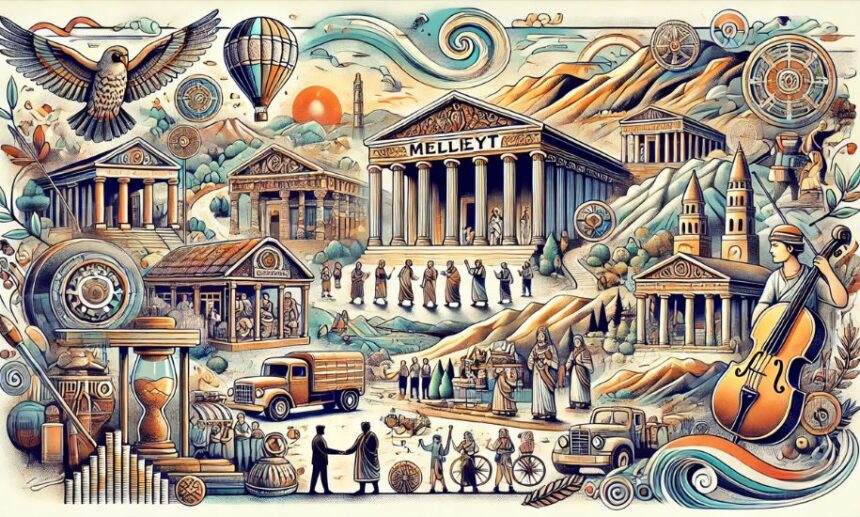At Market Blick, we delve into the intricate tapestry of cultures and histories to bring you fascinating insights. One such topic that captures intrigue is “mıllıeyt.” Rooted in ancient civilizations, the concept of mıllıeyt holds cultural, historical, and societal significance. This article seeks to unravel the origins, evolution, and relevance of mıllıeyt while illuminating its journey through history.
What is Mıllıeyt?
Mıllıeyt, often associated with deep cultural and communal identity, is more than just a term; it is a reflection of shared heritage, values, and traditions. Derived from ancient civilizations, the term encapsulates the essence of belonging to a group that shares common goals, language, or religion. It is a unifying force that binds individuals into a cohesive community, fostering mutual understanding and cooperation.
The origins of mıllıeyt can be traced back to early societies where communities were built on shared responsibilities and collective aspirations. Over time, it evolved into a concept embodying national and cultural pride, becoming a cornerstone of societal cohesion.
The Historical Roots of Mıllıeyt
The history of mıllıeyt dates back to the ancient Mıllıeytian civilization, which thrived centuries ago. This civilization, known for its advancements in governance, art, and societal structure, laid the groundwork for the principles that define mıllıeyt today. Central to their philosophy was the belief in collective progress and the importance of preserving cultural identity.
Artifacts and historical records suggest that mıllıeyt was more than just a notion; it was a way of life. The Mıllıeytians emphasized education, community engagement, and shared values as the pillars of their society. These principles continue to resonate in modern interpretations of mıllıeyt, reflecting its enduring relevance.
The Role of Mıllıeyt in Modern Society
In today’s interconnected world, the essence of mıllıeyt manifests in various forms. From national identity to cultural preservation, the concept remains a vital part of societal structures. Mıllıeyt serves as a reminder of the importance of unity and the strength derived from shared heritage.
Cultural Identity and Preservation
One of the most significant aspects of mıllıeyt is its role in preserving cultural identity. In an era of globalization, where traditions and languages face the risk of dilution, mıllıeyt acts as a safeguard. It encourages communities to embrace their roots, celebrate their heritage, and pass it on to future generations.
National and Global Relevance
Mıllıeyt transcends borders, offering a sense of belonging that extends beyond geographical boundaries. It fosters national pride while promoting global understanding. By respecting the uniqueness of each culture, mıllıeyt encourages a harmonious coexistence in the global arena.
The Philosophical Dimensions of Mıllıeyt
Beyond its societal implications, mıllıeyt has a profound philosophical dimension. It emphasizes the value of collective well-being over individual gains. This philosophy resonates with the idea that a society’s strength lies in its unity and shared purpose.
The Ethics of Community
Mıllıeyt promotes an ethical framework where the needs of the community are prioritized. This approach not only strengthens societal bonds but also nurtures an environment of mutual respect and cooperation. It underscores the importance of empathy and understanding in building a cohesive society.
The Interplay of Tradition and Modernity
While rooted in ancient traditions, mıllıeyt has adapted to modern challenges. This adaptability showcases its timeless relevance. By balancing traditional values with contemporary advancements, mıllıeyt exemplifies the resilience of cultural identity.
Challenges and Opportunities in Embracing Mıllıeyt
Despite its strengths, the concept of mıllıeyt faces challenges in the modern world. Rapid technological advancements and cultural homogenization pose threats to its preservation. However, these challenges also present opportunities to redefine and strengthen mıllıeyt.
Digital Transformation and Cultural Preservation
The digital age offers unique opportunities to document, share, and celebrate mıllıeyt. Platforms that connect individuals globally can be leveraged to promote cultural awareness and appreciation. This digital renaissance ensures that mıllıeyt remains relevant for future generations.
Education as a Catalyst
Education plays a pivotal role in nurturing the values of mıllıeyt. By integrating cultural studies into curricula, societies can instill a sense of pride and belonging among the youth. This approach not only preserves traditions but also fosters a deeper understanding of diverse cultures.
Conclusion
Mıllıeyt is a testament to the enduring power of cultural and communal identity. Its roots in the ancient Mıllıeytian civilization and its evolution into a modern concept highlight its significance in shaping societies. At Market Blick, we celebrate the richness of mıllıeyt and its role in promoting unity and cultural pride.
As we navigate an increasingly interconnected world, the principles of mıllıeyt serve as a guiding light. They remind us of the importance of preserving our heritage, embracing our identity, and fostering a sense of belonging. Through education, digital innovation, and community engagement, we can ensure that the essence of mıllıeyt continues to thrive.







